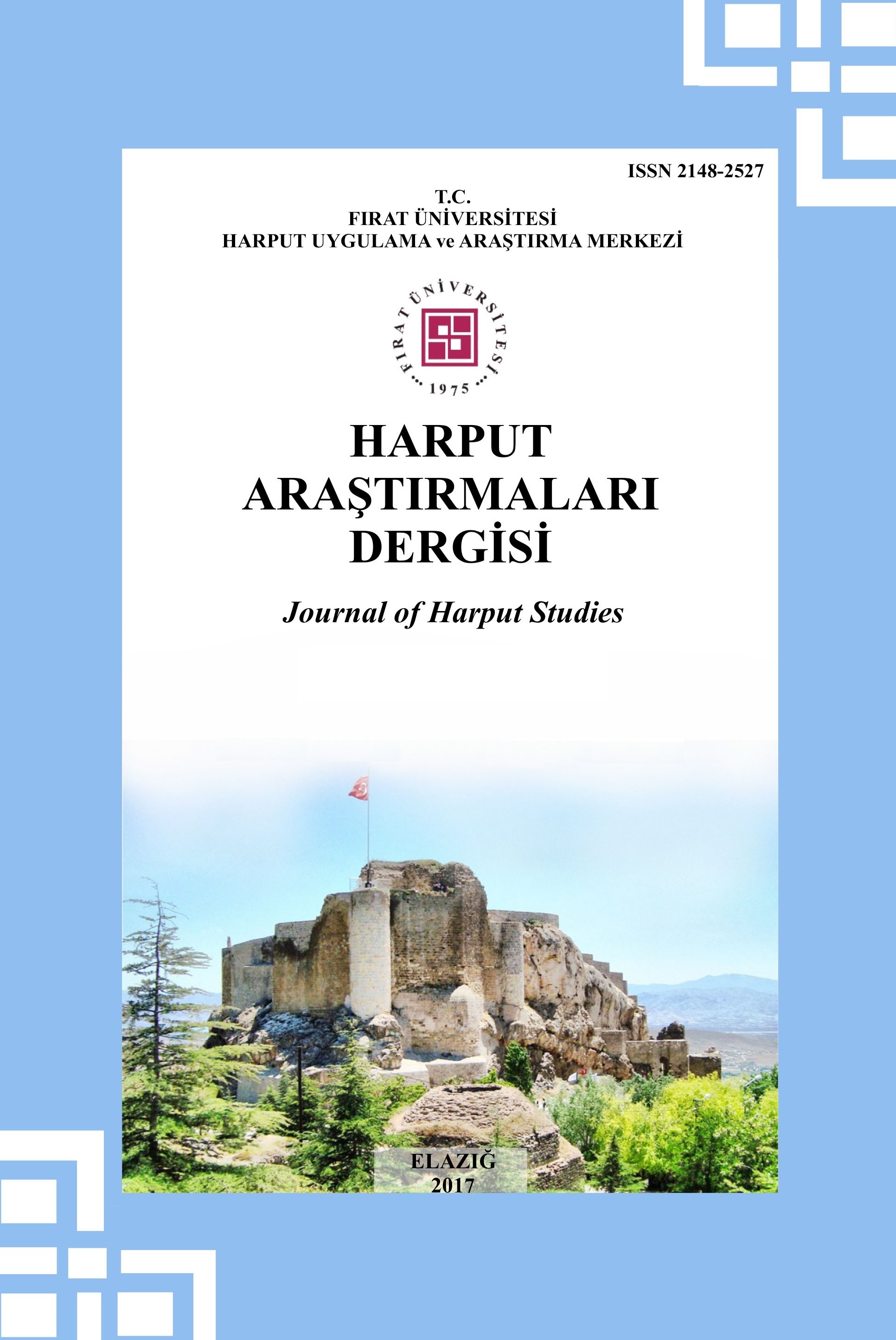1880 YILINDA MAMURATÜ’L-AZİZ’DE NÜFUS, HASTALIK VE SUÇ ORANLARI
İstatistikler içermiş oldukları zengin bilgilerden dolayı araştırmacıların en fazla müracaat ettiği kaynaklardan biridir. Osmanlı Devleti’nde farklı konular için istatistikler hazırlanmıştır. Günümüzde bu istatistikler kullanılarak çeşitli konular hakkında bilgi elde etmek mümkündür. Bu çalışma, Başbakanlık Osmanlı Arşivi’nde bulunan 1880 tarihli istatistiğe göre hazırlanmıştır. İstatistikten elde edilen verilere göre Mamuratü’l-aziz’in nüfus, hastalık, ayan ve eşrafı ile suç oranları incelenerek değerlendirmeler yapılmıştır 1880 tarihli istatistiğe göre, Mamuratü’l-aziz Vilayeti’nin en kalabalık kazası Mamuratü’l-aziz kazası olduğu, vilayet nüfusunun % 77’si Müslüman, % 23’ü gayr-i Müslim’den oluştuğu tespit edilmiştir. Nüfus artışının çok fazla olmadığı vilayette Müslüman ve gayr-i Müslim halkın farklı oranlarda bir nüfus artışına sahip olmadığı ortaya çıkmıştır. Mamuratü’l-aziz’de yaşayan eşraf ve ayanlar incelendiğinde şehrin ilim, ticaret, kültür ve idarî merkez olduğu yaşayan sakinlerinin unvanlarından anlaşılmıştır. İstatistikteki beş aylık hasta bilgilerine göre şehirde en fazla dizanteri, tifüs, ishal ve çiçek gibi salgın hastalıkların olduğu, ölümlerin de en fazla bu hastalıklardan meydana geldiği görülmüştür. Suç ve suç oranları incelendiğinde, Mamuratü’l-aziz merkezde sırasıyla ekonomik, şiddet, cinsel ve diğer suçlar işlenmiştir.
Anahtar Kelimeler:
Mamuratü’l-aziz, İstatistik, Nüfus, Ayan, Hastalık, Suç
Mamuratü’l-aziz Population, Disease and Crime Rate in 1880
Statistics is one of the most important resources for researchers. Statistics contains extensive information. In the Ottoman Empire statistics have been prepared for different topics. Today, it is possible to obtain information about various issues using these statistics. This study is based on Prime Ministry Ottoman Archives statistics which dated 1880. Mamuratü’l-aziz’s population, disease, crime and gentry rates were commentated according to the data that obtained from statistics. According to statistics in 1880, Mamuratü’l-aziz is the most populous district of the Mamuratü’laziz province. It was determined that 77% of population was Muslim and 23% of the population was non-Muslims. The population growth in Mamuratü’l-aziz was not too much and the populations growth rate was similar between Muslim and non-Muslim population. Having studied the gentry living in Mamuratü’l-aziz and the titles of the residents, it is understood that Mamuratü’l-aziz was a science, trade, cultural and administrative center. According to a five-months patient data in Statistics, dysentery, typhoid, diarrhea and epidemics such as flowers were the most common diseases and most deaths were caused by these diseases. Having studied crime and crime rates in Mamuratü’l-aziz, economic, violent, sexual and other crimes are committed respectively.
Keywords:
Mamuratü’l-aziz, Statistics, Population, Gentry, Disease, Crime.,
- ISSN: 2148-2527
- Yayın Aralığı: Yılda 2 Sayı
- Başlangıç: 2014
- Yayıncı: Fırat Üniversitesi
